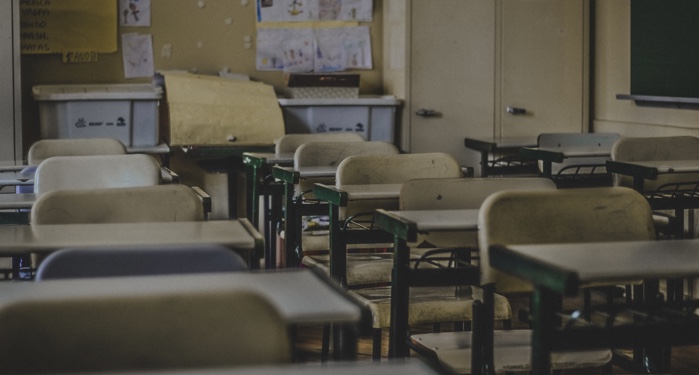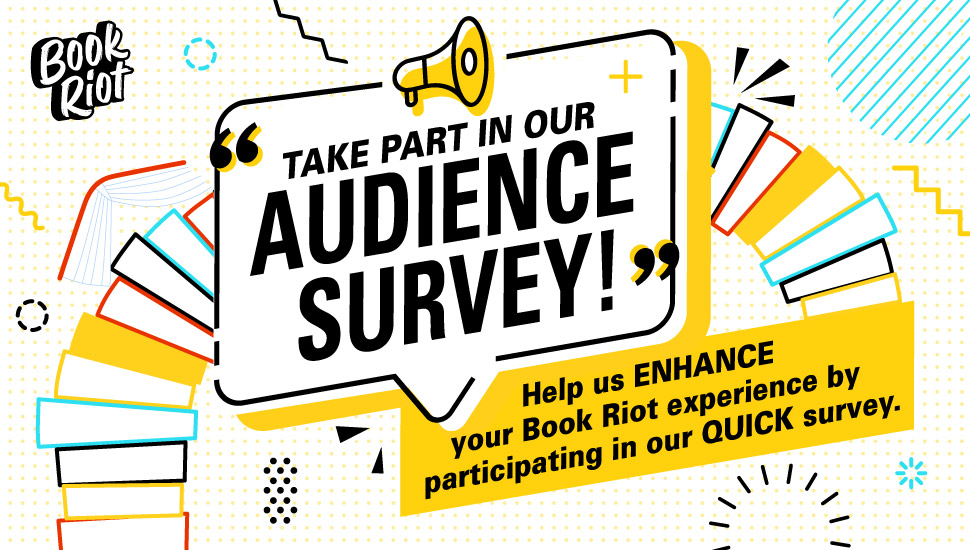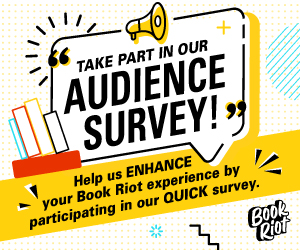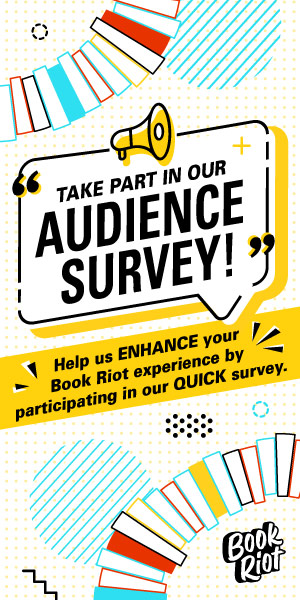
My 5th Grade Teacher Set One Reading Rule & Forever Changed My Reading Life
Fifth grade was and remains one of the most memorable school years of my life. I was in one of those experimental classrooms, wherein both the students needing additional help to succeed, including aides, and the “gifted” were together. The dynamics were unconventional, with all-class projects paired with projects given specifically to “gifted” kids to keep them busy. One day, everyone in the class laid under their desks to paint the Sistine Chapel like Michaelangelo for art class, and the next, I was sitting up at the front of the class with five other “gifted” students doing a script reading of the first moon landing (I got a bloody lip sticking tape to my mouth in the first and remember being the worst Buzz Aldrin in the second).
My teacher had a chronic illness, and throughout the year, she missed stretches of days, until she missed nearly two full months of teaching as her multiple sclerosis rendered her unable to stand.
Despite the inconsistencies across the board, my teacher was so likable, so engaged, and tried her damndest to make everything stacked against the year stay stable. She was a mega proponent of reading, and she encouraged us to read in our free time in class and outside. When we finished a book, we’d write a short report and earn a reward for it.
I vividly recall waking up at 4 a.m. with my grandfather and reading my way through dozens of books that year. I don’t remember what the reward was, but I do remember borrowing books from my best friend, including the “Little House” books about Laura’s daughter Rose.
Though she encouraged reading, my 5th grade teacher had one rule, laid out on the first day of school: we were not allowed to read RL Stine (specifically Fear Street), Christopher Pike, or the like. This was in the mid-1990s, when those books were at the height of their popularity and hard to miss on any shelf. But they weren’t on her shelves.
No one questioned this at first. Teachers had rules, and this was one of hers. We’d had plenty of “welcome to my classroom” sessions over the years, though most did not include a statement on what we couldn’t read.
But given the proliferation of these books — I’d loved Stine’s Goosebumps series a few years earlier, and I had received copies of Chain Letter and Chain Letter 2 during an obligatory “guess the step-kid who likes to read should get a Christmas gift” party with my father’s family — avoiding them completely turned out to be a tremendous challenge.
It wasn’t that the teacher was afraid of horror, and she didn’t discourage horror. She repeated her rule a few times early in the year, reminding us of how much other great stuff was out there.
Classroom book studies included From The Mixed Up Files of Mrs. Basil E. Frankweiler, The Summer of the Swans, and Bridge to Terabithia. She wasn’t afraid of challenging books or books tackling dark, sad topics.
But Pike and Stine remained off limits.
As the year progressed and the cries about how unfair the rule was — what teacher puts a limit on what people can read, anyway? — she sat down on her stool at the front of the room and asked us all for our undivided attention.
“There’s nothing inherently wrong with them,” she explained, shifting which leg was crossed on top. “But I really don’t like how these books exploit girls and women, making them victims of some of the most horrific crimes. Look at the stories and you’ll see the theme of girls being victims. They aren’t all that way, but too many are, and I don’t want to read about it over and over in your book reports.”
Until that point, I’d never thought about themes, let alone motifs, as they came up in the books I read. I thought about the stories, of course, and I thought a lot about the characters. But themes, particularly across a genre or author’s work, never crossed my mind.
But when my teacher explained her reasoning for wanting us to avoid writing reports on these books, to avoid reading them for school work, suddenly it clicked.
There were protests, of course. Examples of books by both authors that didn’t put female characters at the heart of the crime, of the grisly horror.
“You’re right,” she said. “But too many do.”
#
Another thing that changed in 5th grade was my willingness to raise my hand and open my mouth freely.
My body was changing: I went from being the shortest person to being the tallest (at a whopping 5’2, where I’d stall out). I gained weight, and my breasts grew exponentially. I’d not bothered with a bra like many others would at that age, choosing instead oversized tops to keep as much hidden as possible.
I lugged a French horn with me to and from school on the bus. The instrument, with its numerous spit valves, was as big as I was.
A face full of zits wore me, and my teeth chose the rogue route of growth, leading me down paths of medication, which never worked, and orthodontia, which did.
The most noteworthy change, though, wasn’t what happened physically. It was what happened mentally and energetically: I shrunk myself. I didn’t raise my hand to share freely in class anymore. I participated, sure, but there was a reason I was a horrible Buzz Aldrin during our classroom script reading. I shoved myself into a box labeled “girl,” reading the social cues and accepting that I should stop talking so much, stop being so engaged, stop being loud and fully myself.
I focused my energy on reading, on writing, on putting my voice in places that were less visible.
Standing out was my biggest fear, right alongside with saying the wrong thing, not wearing the right things, standing with my shoulders back, any kind of running or jumping, being “unpopular,” not having someone I could call my best friend.
#
It didn’t click in that moment what my teacher was saying. I loved those books, and even though I had no problem picking different titles up to read and report on, it seemed like she was seeing something that wasn’t there.
Then I looked at those books again.
“When Alison first read the chain letter signed “Your Caretaker,” she thought it was some terrible sick joke. Someone, somewhere knew about that awful night when she and six other friends committed an unthinkable crime in the desolate California desert. And now that person was determined to make them pay for it. One by one, the chain letter was coming to each of them … demanding dangerous, impossible deeds … threatening violence if the demands were not met. No one out of the seven wanted to believe that this nightmare was really happening to them. Until the accidents started happening — and the dying…”
“Jean is on her way to Hawaii for a week of fun but the vacation gets off to a gruesome start. The boy beside her on the plane chokes and dies. Jean tries to push the incident out of her mind when she arrives on the island but it’s impossible. Part of the reason is because Mike keeps coming back to her in dreams; horrible dreams filled with blood. Two of Jean’s friends are awaiting her in Hawaii — Mandy and Michele. They have already made friends with two young men who teach scuba diving at the hotel, Dave and Johnny. Jean and Johnny quickly become friends but there are problems in paradise. Dave and Johnny have recently lost a partner in the ocean. No one knows how he died. No one can find his body. Then Jean does. It isn’t where it’s supposed to be and seems to have some life in it!”
“From the minute that Jenny accepts the Hagen baby-sitting job, she knows she has made a terrible mistake. First there is the dark and gloomy Hagen house, filling her with dread and horror. Then the crank phone calls start. When she finds a threatening note in her bag, she realizes that this isn’t a harmless game.”
“Natalie Erickson and her friends share a terrible secret. They were all in the car that foggy night — the night someone died at the dead end. Now someone knows too much, and there’s danger ahead. Natalie just wants out of this nightmare. But that’s the problem with dead ends — there’s no way out! “
Indeed, girls are the primary main characters. The ones usually caught up in the horror. Frequently the victims.
Most of those books featured girls without agency, without the ability to speak up or out. Sure, they try to figure out what’s going on, but they do so while relying on others — especially male characters, especially those on whom they’re crushing or wanting to date — shrinking themselves, becoming but shells of whole, complex characters in service of the gore.
#
“Can anyone guess where the coldest place in the U.S. was yesterday?” my teacher asked during her regular morning welcomes. She always read or made us guess the hottest and coldest U.S. locations the prior day.
I knew — it was Truckee, California. It was almost always Truckee, California.
But I didn’t raise my hand.
A boy had told me recently I talked too much, and I took to heart that no one wanted to hear my voice. It was better to keep silent. To be part of the scenery, a tool to move the plot around me, rather than be engaged with it.
#
My 5th grade teacher forever changed the way I read books, even if I could not articulate it at the time. Even if I was myself doing what these female characters did: shoved it down, took the blame, accepted my fate as decoration, as opposed to the star of my own life.
She wasn’t entirely right — plenty of those ’90s teen horror books didn’t follow the script she’d proposed — and her rule is one I think about all the time as a harmful limitation. Many of those books, female victim or not, are sheer fun and escapism. The kinds of books 5th graders love. The kinds of books that allow an experimental, sometimes frustrating, classroom like ours to unite over. The kinds of books that dig into the reality that horror is part of all of our lives, that we can confront it and allow it to be part of us without defining us.
Her rationale wasn’t entirely about those books, though.
It was about the ways girls are socialized, about the ways adolescent girls too often become victims of beliefs about who or what they should be. About the ways they step out of the way and allow those socialized as male to be the heroes, to be the ones who shatter the challenges in front of them, clearing a path for them to be carried through.
#
I shuffled quietly through middle school, high school, and college. I took the failing grades in classroom participation because it felt too scary to speak up.
My voice and power were in my writing.
#
The further I work through my childhood memories and experiences through my adult eyes, though, the louder my voice becomes. The more I raise my hand, the more I find tremendous power and energy in owning who I am, owning my perspectives, and sharing.
I’m not going to be liked by everyone, and I’m fine with that. I certainly don’t like everybody myself.
My opinions won’t be popular. My perspective and my insistence in certain behaviors and ideologies won’t be appreciated by all.
But they’re my truths, and I’ll live them out loud.
In this excavation, I come back to what my 5th grade teacher said. She was probably around the age I am now, if not a little older, navigating a world of chronic illness and pain in the physical and social world around her.
Yes the books featured girls as victims. Girls who shrunk themselves.
“I don’t want to read about it over and over in your reports.”
She knew what happened when she read about it over and over. Read about the same stories of girls made small, girls dependent upon boys, girls who were victims, despite their efforts to not be. It’s socialization in progress: 30 kids in a classroom reading the same stories, talking about the same plots and characters, about the girls who can’t or don’t or won’t stand up for themselves.
We could read them. We could see them.
She just didn’t want us to bring it into the classroom, the perfect petri dish for breeding those ideas to normalcy and acceptance.
#
These books are different now, to me and likely to my generation. We’re loving the reboots, reminiscing about an easier time. It’s fun. It was an easier time, before adult responsibilities, bills, the tragic realities of living with a pandemic, economic uncertainty, unrelenting racism, police brutality, political strife, and every other challenge we’re facing.
But it’s impossible not to consider the unspoken undercurrent of that nostalgia: a desire for scripts that make it easier to shrink, rather than pick up the sword and fight against the wrongs. To allow someone else to raise their hand and speak up, instead of taking up the sword ourselves.
Be it radical self compassion or total life transformation or social justice work or divorcing from shitty relationships (friends, partners, family), we need to take control for ourselves.
It’s impossible for me not to hear my teacher in every choice I make about what I let into my life. To think about the themes connecting those things, even if it’s not holistic. Seeing my own biases at play is a vital part of growing up, too.
My teacher made me a feminist reader — helped me step into feminism, period — even if it took me another two decades to figure out how to open my mouth with confidence.














